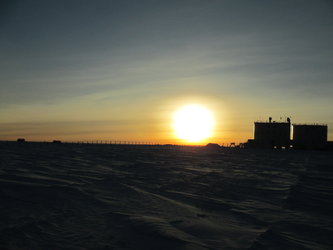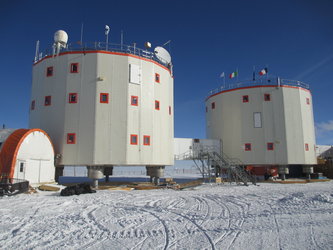Accept all cookies Accept only essential cookies See our Cookie Notice

About ESA
The European Space Agency (ESA) is Europe’s gateway to space. Its mission is to shape the development of Europe’s space capability and ensure that investment in space continues to deliver benefits to the citizens of Europe and the world.
Highlights
ESA - United space in Europe
This is ESA ESA facts Member States & Cooperating States Funding Director General Top management For Member State Delegations European vision European Space Policy ESA & EU Space Councils Responsibility & Sustainability Annual Report Calendar of meetings Corporate newsEstablishments & sites
ESA Headquarters ESA ESTEC ESA ESOC ESA ESRIN ESA EAC ESA ESAC Europe's Spaceport ESA ESEC ESA ECSAT Brussels Office Washington OfficeWorking with ESA
Business with ESA ESA Commercialisation Gateway Law at ESA Careers Cyber resilience at ESA IT at ESA Newsroom Partnerships Merchandising Licence Education Open Space Innovation Platform Integrity and Reporting Administrative Tribunal Health and SafetyMore about ESA
History ESA Historical Archives Exhibitions Publications Art & Culture ESA Merchandise Kids Diversity ESA Brand Centre ESA ChampionsLatest
Space in Member States
Find out more about space activities in our 23 Member States, and understand how ESA works together with their national agencies, institutions and organisations.
Science & Exploration
Exploring our Solar System and unlocking the secrets of the Universe
Go to topicAstronauts
Missions
Juice Euclid Webb Solar Orbiter BepiColombo Gaia ExoMars Cheops Exoplanet missions More missionsActivities
International Space Station Orion service module Gateway Concordia Caves & Pangaea BenefitsLatest
Space Safety
Protecting life and infrastructure on Earth and in orbit
Go to topicAsteroids
Asteroids and Planetary Defence Asteroid danger explained Flyeye telescope: asteroid detection Hera mission: asteroid deflection Near-Earth Object Coordination CentreSpace junk
About space debris Space debris by the numbers Space Environment Report In space refuelling, refurbishing and removingSafety from space
Clean Space ecodesign Zero Debris Technologies Space for Earth Supporting Sustainable DevelopmentLatest
Applications
Using space to benefit citizens and meet future challenges on Earth
Go to topicObserving the Earth
Observing the Earth Future EO Copernicus Meteorology Space for our climate Satellite missionsCommercialisation
ESA Commercialisation Gateway Open Space Innovation Platform Business Incubation ESA Space SolutionsLatest
Enabling & Support
Making space accessible and developing the technologies for the future
Go to topicBuilding missions
Space Engineering and Technology Test centre Laboratories Concurrent Design Facility Preparing for the future Shaping the Future Discovery and Preparation Advanced Concepts TeamSpace transportation
Space Transportation Ariane Vega Space Rider Future space transportation Boost! Europe's Spaceport Launches from Europe's Spaceport from 2012Latest

Here comes the Sun
Thank you for liking
You have already liked this page, you can only like it once!
At this very moment, a spacecraft is headed toward the brightly burning Sun, photographed here on an Antarctic summer day by ESA sponsored medical doctor Stijn Thoolen at Concordia research station.
Solar Orbiter is ESA’s latest mission to study the Sun up close. Launched in the early hours of 10 February from Cape Canaveral, Florida, the spacecraft is due to arrive at its fiery destination in approximately two years.
Solar Orbiter will face the Sun from within the orbit of Mercury, approximately 42 million kilometres from the solar surface. This is an ideal distance: from here Solar Orbiter can take remote images and measurements that will provide the first views of the Sun’s uncharted polar regions.
At the southern poles on Earth, in Antarctica, the Sun has an exceptional presence on people living at the remote Concordia research station. During the Antarctic summer, the sun shines 24 hours a day. It would be perfect for sunbathing, except for the fact that the average summer temperature is only –30°C.
Consequently, in the winter the Sun does not appear above the horizon for over three months and the crew stationed in Concordia live with outside temperatures of –80°C in complete darkness.
In 2015 ESA-sponsored medical research doctor in Concordia Adrianos Golemis captured the Sun at 16:00 every Monday for a year and explains the technique in this blog entry.
While Solar Orbiter is en route to observing the Sun up close, the crew in Concordia are preparing for life without and enjoying the last rays of sunlight while they can. This picture shows a halo that can occur when sunlight is refracted off ice crystals in the atmosphere.
The mission will investigate how intense radiation and energetic particles being blasted out from the Sun and carried by the solar wind through the Solar System impact our home planet, to better understand and predict periods of stormy ‘space weather’.
While this results in beautiful aurora seen in the Arctic and Antarctic circles, stormy space weather can be disastrous. Solar storms have the potential to knock out power grids, disrupt air traffic and telecommunications, and endanger space-walking astronauts, for example.
A better understanding of how our parent star works is critical to our preparedness for these scenarios on Earth.
Follow more news about life and science at Concordia research station, located at Dome C in the Antarctic Peninsula, on the Chronicles from Concordia blog.
-
CREDIT
ESA/IPEV/PNRA–S. Thoolen -
LICENCE
ESA Standard Licence

Concordia sunset

Concordia research station at night

Last Concordia sunset 2013

Last Antarctic sunset















 Germany
Germany
 Austria
Austria
 Belgium
Belgium
 Denmark
Denmark
 Spain
Spain
 Estonia
Estonia
 Finland
Finland
 France
France
 Greece
Greece
 Hungary
Hungary
 Ireland
Ireland
 Italy
Italy
 Luxembourg
Luxembourg
 Norway
Norway
 The Netherlands
The Netherlands
 Poland
Poland
 Portugal
Portugal
 Czechia
Czechia
 Romania
Romania
 United Kingdom
United Kingdom
 Slovenia
Slovenia
 Sweden
Sweden
 Switzerland
Switzerland
























